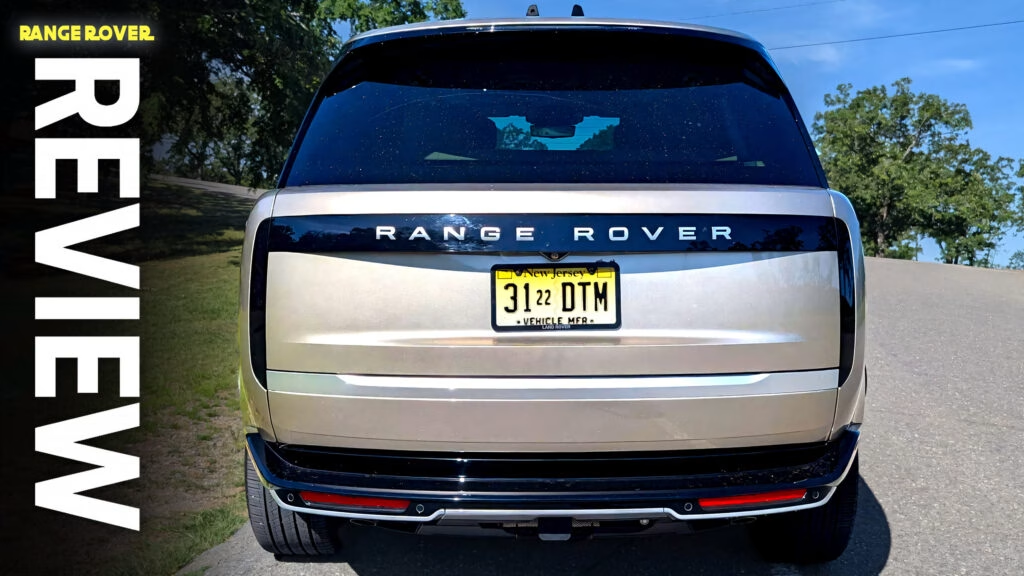Who Buys a Range Rover Autobiography Instead of a Rolls-Royce or Bentley?
Let’s be honest: the 2025 Land Rover Range Rover Autobiography isn’t for everyone. With a starting price north of $110,000—and our test model ringing up at a jaw-dropping $174,705—it’s a vehicle for those who could buy a Rolls-Royce Cullinan or Bentley Bentayga, but don’t necessarily want to shout about it. The Range Rover’s appeal is all about quiet confidence. It’s the Tudor watch to the Cullinan’s Rolex: just as refined, but less flashy.
This is the SUV for buyers who crave luxury and capability, but prefer subtlety over spectacle. If you’re the type who wants to blend in at the country club parking lot, but still expects a cabin that rivals a five-star hotel suite, the Autobiography trim is probably on your radar.
How Does the 2025 Range Rover Autobiography Stand Out in the Luxury SUV Crowd?
The luxury SUV market is crowded with heavy hitters: Lamborghini Urus, Aston Martin DBX, Mercedes-Benz GLS, BMW X7, and of course, the aforementioned Rolls and Bentley. Yet, the Range Rover carves out its own niche. It’s more expensive than the Escalade or Navigator, but undercuts the Cullinan and Bentayga by tens of thousands.
What sets it apart? For starters, the design. The latest L460 generation ditches the old blend of rugged and posh for a monolithic, ultra-smooth look. Think Tesla Cybertruck, but with manners. Every panel flows into the next, and the Batumi Gold paint on our tester (inspired by sunsets in Georgia—the country, not the state) is deep and rich, without being gaudy. Black accents and heavy window tint add to the stealth-wealth vibe.
What’s It Like Behind the Wheel and in the Cabin?
Step inside, and the Range Rover’s contradictions become clear. Up front, you’re greeted by a squared-off dash and console, but the seats are plush, rounded, and endlessly adjustable. Massage, heat, cooling—you name it, it’s there. The infotainment screen isn’t the biggest in the business, but it’s intuitive and quick, with separate climate and media controls for each front occupant. The Meridian sound system is a treat, and thoughtful touches like dual glove boxes and a chilled center console make daily life easier.
But not everything is perfect. There’s a surprising amount of piano black plastic, especially on the steering wheel, which feels a bit downmarket compared to the rest of the interior. The gear selector and start button sit awkwardly on a half-empty panel, and the space under the cupholders is blocked if you’re actually using them. Even the seats, while comfortable, could use more lumbar support for long hauls.
Is the Back Seat as Luxurious as It Looks?
Here’s where things get interesting—and a bit frustrating. On paper, the rear seats should be a rolling spa. They’re nearly identical to the fronts, with power recline, massage, climate controls, and even integrated pillows. The center console is a marvel of over-engineering: press a button on the touchscreen, and it slowly motors open to reveal cupholders. Then you have to press another section to actually access them. It’s a little absurd, honestly.
The real issue? Legroom. The standard-wheelbase (SWB) version tries to pack all this luxury into a space that’s just too tight for true rear-seat comfort. You can recline, or you can stretch out your legs—but not both. Cargo space is decent at 40.7 cubic feet, but some rivals do better. And for this price, why isn’t there a killer rear-seat entertainment system? BMW’s 7-Series offers a 31-inch theater screen for less money.
How Does It Drive—On and Off the Road?
Here’s where the Range Rover earns its stripes. The 4.4-liter twin-turbo V8 puts out 523 horsepower and 553 lb-ft of torque—more than a new Corvette Stingray, for context. But it’s not a brute. Acceleration is smooth and composed, like a private jet gathering speed on the runway. Zero to 62 mph comes in just 4.6 seconds, which is wild for a nearly three-ton SUV.
Fuel economy isn’t great (EPA says 16 city, 23 highway, 19 combined; we saw 17.2 in mixed driving), but that’s par for the course in this segment. What really impresses is the ride. With Dynamic Response Pro and Adaptive Dynamics suspension, the Range Rover corners flatter and steers more precisely than you’d expect. The brakes are easy to modulate, and the whole experience feels bank-vault solid. Road noise? Practically nonexistent.
Off-road, it’s even more impressive. Despite 23-inch wheels, it shrugged off gravel and mud like it was nothing. Most owners will never push it that hard, but knowing you could is part of the Range Rover mystique.
How Does It Compare to Rivals Like the BMW X7, Lexus LX, and Mercedes GLS?
The Range Rover doesn’t really have a direct competitor. It’s pricier than the American luxury SUVs, but less ostentatious (and less expensive) than the ultra-luxury crowd. Against the BMW X7, Lexus LX, and Mercedes GLS, it leans harder into both luxury and off-road ability. For buyers who want a little of everything—style, comfort, capability—it’s a compelling package.
That said, if you care more about rear-seat space, tech, or value, you might be happier with a long-wheelbase Range Rover, a BMW 7-Series, or even the Range Rover Sport, which is more practical and just as fun to drive.
What’s the Real-World Verdict on the 2025 Range Rover Autobiography?
The 2025 Range Rover Autobiography is a masterclass in contradictions. It’s both brutish and elegant, high-tech and occasionally frustrating, capable of climbing mountains but destined for city streets. For the right buyer—someone who values subtle luxury, off-road prowess, and a unique sense of occasion—it’s hard to beat.
But if you crave rear-seat opulence, cutting-edge tech, or maximum practicality, you’ll want to look elsewhere or at least spring for the long-wheelbase version. The big takeaway? The Range Rover Autobiography isn’t about perfection—it’s about smarter adjustments. Start with one change this week, and you’ll likely spot the difference by month’s end.

